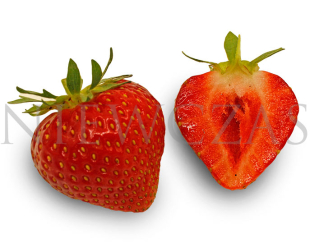BL39*Arianna®
BL39 *Arianna® is a very early dessert variety that starts fruiting already at the end of May. It produces attractive, sweet, and firm fruits with excellent shelf life and transportability. It is low susceptible to soil-borne diseases and performs well both in open field and protected cultivation.
Fruiting time: Very early variety. Fruits about 3 days before Alba and 2 days before Clery*, allowing for a harvest that starts in late May – around the turn of May and June under Central European continental climate.
Taste and firmness: Juicy, sweet, and aromatic fruits with a pleasant, wild-strawberry-like flavor profile. Highly appreciated by consumers for its outstanding taste. The flesh is firm, ensuring excellent post-harvest durability and resistance to transport damage.
Size and shape of fruits: Large, uniform fruits with consistent size even at the end of the harvest period. Shape is conical to heart-shaped, highly attractive and regular.
Color of fruits: Intensely red skin with a strong gloss. Flesh is medium red. Visually appealing and well-suited for commercial sale.
Productivity: High-yielding and consistent. Provides uniform harvests throughout the fruiting period.
Plant type: Vigorous and upright growth. Plants are strong and healthy.
Resistance: Low susceptibility to soil-borne diseases. Suitable for cultivation in non-sterilized soils. Requires protection against powdery mildew (Podosphaera macularis and P. aphanis). Well adapted to Central European continental climate.
Purpose: Perfect for both direct market (local and distant) and supermarkets due to its firmness and shelf life. Excellent dessert variety. Also suitable for processing.
Cultivation type: Suitable for open field and tunnel cultivation. Recommended for early harvests and organic or hobbyist farming.
Cultivation recommendations: Preventive protection against fungal diseases is advised. Regular removal of runners is recommended. Performs well in continental climates of Central and Northern-Eastern Europe.
*The fruiting time refers to traditional cultivation in Central Europe (moderate continental climate) under standard weather conditions. Actual fruiting period may vary depending on local conditions and cultivation techniques.
















